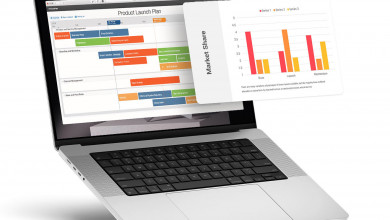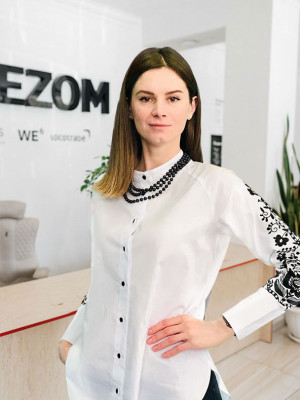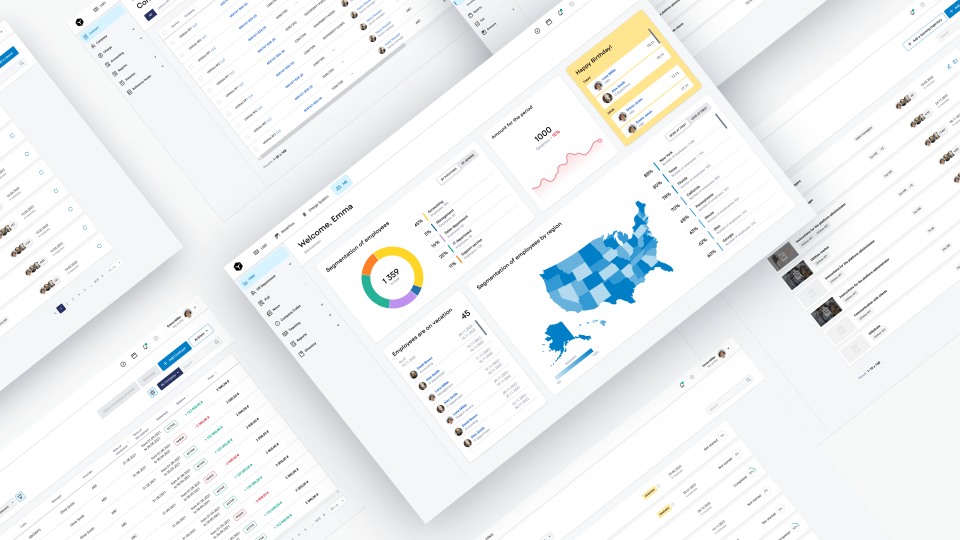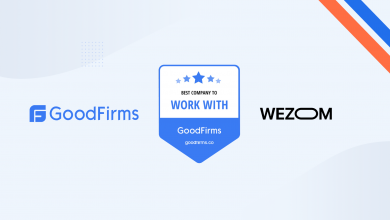To create an effective product, it is vital that business requirements and development capabilities are aligned. In agile teams, this is usually the responsibility of a Product Owner (PO). However, it is not always enough for a PO to provide the right technical solutions. PO needs support from tech leads in architecture, technology, development and integration.
When a project scales rapidly and the complexity of tasks increases, technical specialists do not have the time to communicate closely with a Product Owner. Technical Product Owner (TPO) comes to the rescue, ensuring that the sustainability and long-term effectiveness of the product is not compromised.
We will tell you what the position entails and answer the big question "Do you need a TPO in your development team?"
What Is a Technical Product Owner?
TPO is a specialist who acts as a bridge between the business side, which expresses customer needs, and the technical teams, which translate business requirements into understandable and feasible tasks.
This role is that of a Product Owner's right-hand. He is responsible for the technical aspects of the product, as well as some functional and communication responsibilities.
Having a Tech Product Owner in the team enables you to:
- prioritize the roadmap, considering technical capabilities and constraints;
- improve communication among the customer, development team, and product management team;
- reduce technical debt;
- avoid development delays and minimize risks associated with efficient resource use.
Describing all the functions and defining the specific role of a TPO is difficult. TPO is a flexible specialist with a wide range of skills who excels in abnormal and critical situations. Also when a deep understanding of the technical aspects of the product and development is required to ensure its success and quality.
This position does not have a clear set of obligations. There is no point in looking for them in Scrum or SAF-instructions.
It all depends on the size of the product, the complexity of the tasks and the primary objectives. On the other hand, the absence of job descriptions allows TPO responsibilities to be maneuvered from project to project. You can adapt them to current tasks and cover "weak points".
|
We can conclude that TPO's work overlaps with other roles in the team. He acts as Technical Consultant, Scrum Master, Customer Manager and Team Leader all in one.

Product Owner vs. Technical Product Owner: What's the difference?
These are two roles that are often found in a product development management methodology such as Scrum. Let's understand their similarities and differences.

1.Focus on product vs. technical aspects
Product Owner's primary focus is on the value of the product to users and the business. PO is responsible for setting benchmarks and vision, backlog creation and management.
TPO focuses on the technical aspects. This is the choice of technologies, system architecture, ensuring the technical feasibility of functions, etc.
2. Communication and stakeholders
Product Owner actively engages with customers, users and other stakeholders to understand their needs and product requirements.
TPO works closely with developers, engineers and other members of the technical team.
3. Area of responsibility
Product Owner: Responsible for delivering value at every stage of development and release.
Technical Product Owner: Responsible for technical strategy, technical leadership and ensuring technical feasibility of requirements.
4.Skills and experience
Product Owner has a more business-oriented background: understanding the market, users, competitors. Often has experience in product management or analysis.
TPO is more likely to have a technical background and experience in software development.
Difference between TPO and other roles in the team
Therefore, we found that the role of a Technical Product Owner has a technical bias in all aspects. On the other hand, there are enough other specialists with similar skills in the development team. For example, Solution Architects (SA).

Is there a difference between Technical Product Owner vs. Solution Architect (SA)?
Yes.
The Solution Architect typically works at a higher level and can influence the strategic technology decisions of the business. He or she has even deeper technical knowledge, including the development of architectural patterns, tech stacks and design principles.
What about a Delivery Manager (DM)? Can he take on the role of a TPO?
Yes. Again, if their Tech Skills are sufficient. The DM is usually involved in organizing the team's work: coordinating resources, managing risks, and ensuring transparency and timely communication of project status to stakeholders.
Can we conclude that any team member with sufficient technical skills can play the role of TPO?
Yes and no. In small teams, engineers or architects with sufficient skills often perform TPO. In this case, it is important to distribute the focus correctly to avoid overloading resources.
The main difference between the roles is the level of involvement and responsibility for the decisions made. A Dedicated development team, including a product manager, TPO, business analyst (BA) and specialists from a variety of disciplines, can develop, launch and promote the product in the most efficient way.
7 Key Responsibilities of Technical Product Owner
Now that we have defined the portrait of this specialist, understood his area of responsibility and the focus of his work, we can move on to a sample list of Technical Product Owner roles and responsibilities. It is quite non-trivial.
- Managing the product backlog
- сreating and maintaining product backlog;
- controlling epics, stories and initiatives;
- prioritizing them;
- making adjustments in response to changing business needs and user feedback.
- Translating product managers' strategies to tasks for development
- serving as a liaison between product and development;
- staying accessible to development to answer questions;
- obtaining additional information for architectural decisions;
- technology support.
- Defining and prioritizing requirements
- gathering, analyzing and shaping product requirements;
- prioritization based on technical constraints.
- Technical advice for PO
- assessment of the technical feasibility of the requirements;
- joint planning of the roadmap;
- support with key decision making and removal of technical debt;
- look for solutions to develop business elements in the product.
- Interaction with interested parties and stakeholders
- attending rallies and explain the process of the technical part of the development;
- looking for technical solutions to achieve the objectives set;
- peer reviewing of difficulties;
- setting time projections.
- Release planning and management
- tracking product performance and efficiency metrics;
- ensuring its technical development;
- creating value for users;
- checking product's technical compliance with stated business requirements.
- Team management
- interaction with Solution Architect to build the system architecture;
- development of a unified team backlog;
- consistent flow of architectural changes through the teams;
- assurance of time to delivery and achievement of objectives.
Through the work of a Technical Product Owner, the team gains a full understanding of the product requirements and objectives. Clients and stakeholders - accessible explanations of development capabilities. PO - support in making key decisions.
Important: Not all of the features described above may be required for your project.
We have only tried to maximize the capabilities and demonstrate the importance of a role/what a Technical Product Owner does.

Practical importance of TPO in a project. Wezom Case Study
Client: company in the oil & gas sector with 17 offices operating
Aim: to develop a customized ERP system that would simplify, cost less and speed up internal business processes.
Why we decided to involve TPO in the project. We needed his help for a number of reasons:
- technically complex synchronization between individual products and departments, ensuring that all processes are interconnected;
- responsible employee should have a clear understanding of the oil & gas sector: study work processes, well information, specific data security regulations, etc;
- understanding potential for integration with existing software in the oil & gas sector was needed.
After initiating the project and assessing its technical feasibility, a Technical Product Owner conducted in-depth analysis, studied internal industry processes and proposed effective user stories. She Ensured clear communication between the development team, stakeholders and client.
Result:
- TPO carried out User Acceptance Testing (UAT) with the client, as a result of which the analytics module identified areas of revenue loss;
- our development team provided training materials for the client's team, enabling 1,500 employees to seamlessly migrate to the new platform;
- TPO helped find the most efficient solution for the billing module;
- MVP was launched 8 sprints earlier thanks to the work of our TPO.
Education and Work Experience Needed for Technical Product Owner
This specialist usually has an unusual combination of training, experience and skills that help them to be effective. The key elements are outlined below.
Education
TPOs usually have at least a Bachelor's degree in Information Technology/Software Engineering or any other related field of Computer Science.
Training and experience
Due to the highly flexible responsibilities and roles, a Technical Product Owner is trained on the job. This allows them to tailor their skills to the company's specific products and processes. Often, TPOs are also taught database and programming skills.
Certificates and licenses
Certification is not a prerequisite for employment. But it is a demonstration of the holder's knowledge, which ultimately allows them to express themselves better and solve tasks at a more complex level.
For example, the specialists of Wezom company have the following certifications:
- Scaled Agile Framework PO/PM 6/0;
- Certificate Certified Product Manager (CPM) from Product School Enterprise Design; Thinking Practitioner by IBM.

Technical Product Owner Qualifications and Skills
Let's try to understand what set of knowledge, skills and abilities is required for a TPO to maximize its value in teamwork
Technical Product Owner Soft Skills
A successful Technical Product Owner needs to have a wide range of soft skills to be effective. Here are some of the most important:
Communication
TPO must be an excellent communicator, able to communicate effectively with a wide range of stakeholders, including the development team, customers, management and other project members. This includes the ability to express ideas clearly, to listen to and understand the needs of others, and to manage conflict and resolve contentious issues.
Analytical Capabilities
TPO must have an analytical mindset to understand business requirements, analyze data and make weighted decisions. The ability to assess risk and predict consequences is equally important.
Decision making
He must be able to influence decision making and convince stakeholders of the right way forward. They must also be flexible and adaptable to quickly respond to changes in business, market or technology requirements and change their approach rapidly if necessary.
Problem-solving
TPO must be creative and innovative to come up with new ideas and approaches to solving problems. He must also think strategically and find ways to eliminate abnormal situations.
Technical Product Owner Tech Skills
- Agile methodologies, including Kanban and Scrum;
- Software Development: basic principles of software development, architectural patterns, programming languages, databases, web technologies;
- Project and task management tools: Jira, Trello, Asana, etc;
- Product Development;
- UX/UI.
Hire Tech Experts for your Project
Bottom line, do you need a TPO in your development team?
Absolutely, if:
- your project is highly dependent on technical factors (requires integration with other systems, performance optimization or data security);
- If you are creating a product based on new technologies and innovative approaches, you need to identify the technical capabilities and constraints for achieving the intended functionality;
- your project has a high level of technical risk and involves multiple Agile teams that need to work together effectively.
When it is possible not to include a Technical Product Owner in the team
While having a TPO is very useful in many projects, there are certain cases where their involvement is optional or impractical. Here are some such situations:
- if Product Owner has sufficient knowledge and is willing to take responsibility for technical decisions;
- if team leaders and architects have the opportunity to take on this role as an additional burden;
- when a small team is needed to deliver a product;
- in the context of the company's limited resources.
Searching for Reliable Developer?
Read the article below to learn more about our expertise and how we can help you achieve success.


